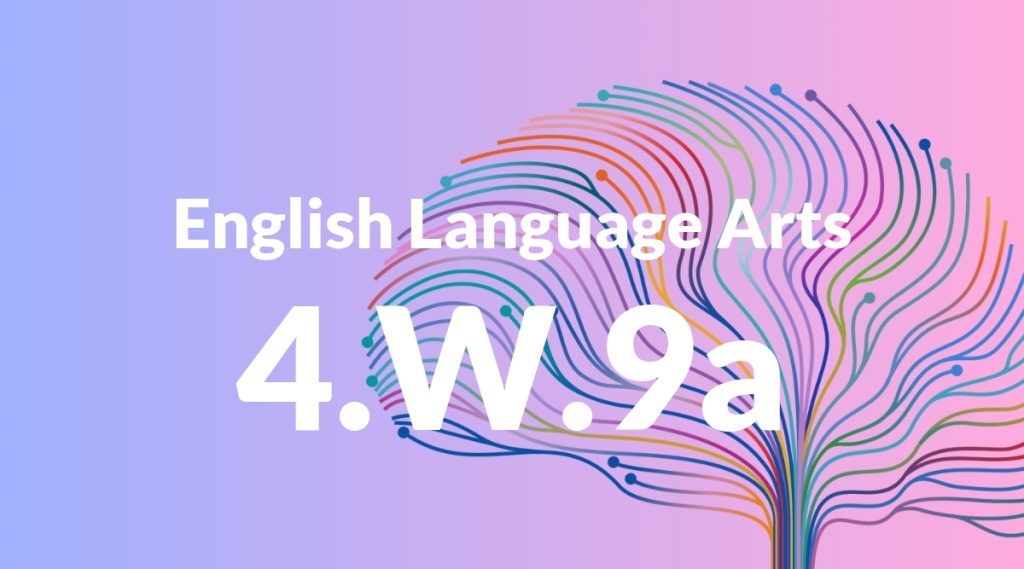Standard: 4.W.9a – Apply grade 4 Reading standards to literature (e.g., “Describe in depth a character, setting, or event in a story or drama, drawing on specific details in the text [e.g., a character’s thoughts, words, or actions].”).
Grade level: Grade 4
Subject: English Language Arts
Domain: Writing
Teacher Overview
This standard focuses on applying reading comprehension skills to literature by describing characters, settings, and events in detail. It is important because it helps students develop a deeper understanding of the texts they read, enhancing their overall reading and analytical skills. Students should be comfortable identifying and describing basic story elements such as characters, settings, and plots in simple texts.
Students will be able to analyze more complex texts, understanding deeper themes and character development, and draw connections between different texts and real-life situations.
Common Misconception 1
Some students may think that describing a character is limited to physical descriptions. This is incorrect because a thorough character analysis includes understanding the character’s thoughts, words, and actions, which provide insight into their motivations and personality.
Intervention 1
Use graphic organizers that prompt students to consider a character’s thoughts, words, and actions. Encourage discussions and role-playing activities to explore characters’ motivations.
Common Misconception 2
Students might believe that the setting is just the physical location of the story. This is a misconception because the setting also includes the time period, social environment, and how these elements affect the characters and plot.
Intervention 2
Have students create detailed setting maps and timelines. Discuss how different settings can influence the story’s events and characters’ behaviors.
Prerequisite Knowledge
Students should have a basic understanding of story elements such as character, setting, and plot. They should also be able to identify and describe these elements in simple texts.
Subsequent Knowledge
After mastering this standard, students will be able to critically analyze more complex texts, understanding deeper themes and character development. They will also be able to draw connections between different texts and real-life situations.
Instructional Activities
- Create character profiles with detailed descriptions of their thoughts, words, and actions.
- Develop setting maps that include physical locations, time periods, and social environments.
- Role-play scenes from stories to explore characters’ motivations and actions.
- Write comparative essays on characters from different stories.




